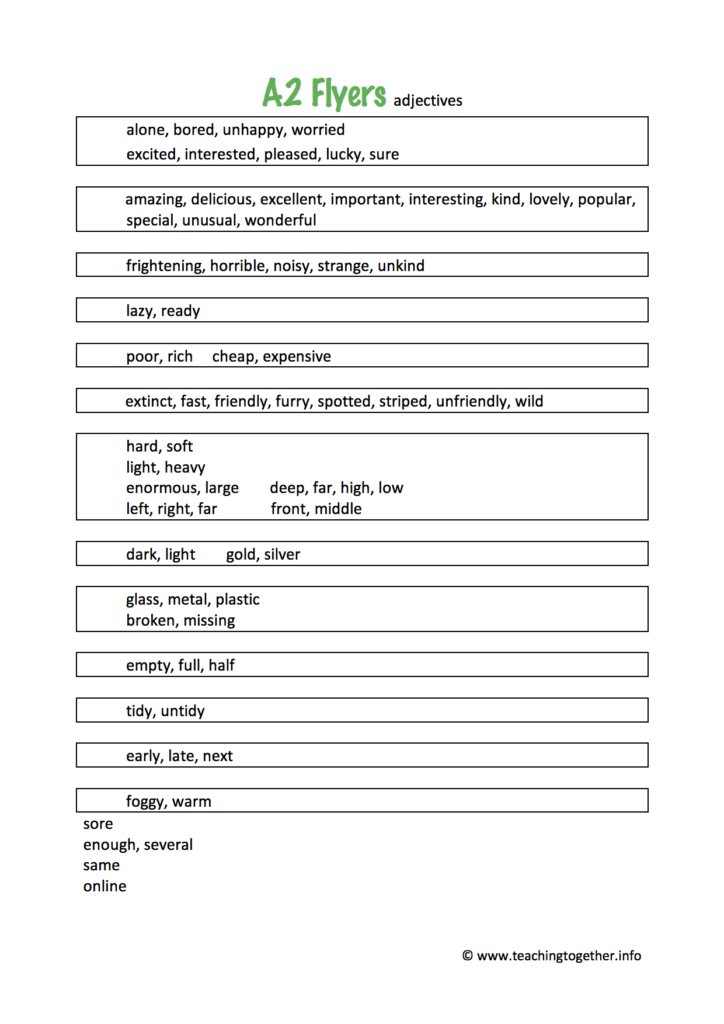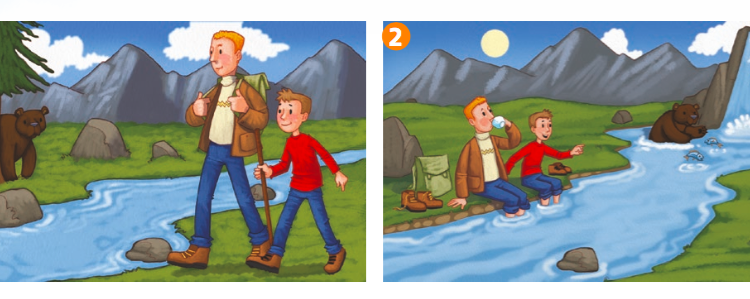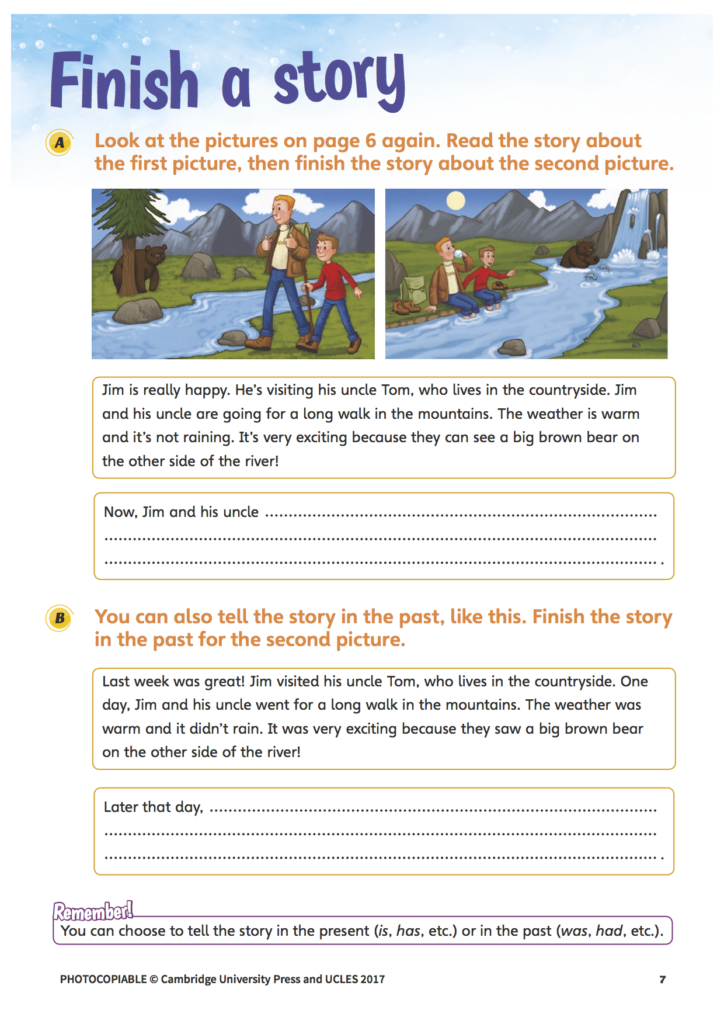Flyers writing booklet – Finish a story
In this, my sixth post, I’ll be writing about page 7 of the Flyers writing skills booklet – Finish a story.
As you can see from the pictures, this activity is directly related to my previous post – Writing about differences.
1. What I’d suggest here is that learners look a the first picture and think how they would describe where the people are and what they are doing. And also choose names for them, as I suggested in my third post: Making sentences longer.
2. Next, tell learners to read the story for the first picture.

Ask them to tell you which words make the story more interesting. I think the adjectives are the words that add a bit more colour, interest to the story. happy, long, warm, exciting.
3. Ask learners to look at picture 2 and to think which adjectives they could use for the story for this picture. *If your learners need some ideas, you could show them the list of adjectives for A2 Flyers. (see below).

You can help learners think of interesting words to use by asking them questions, e.g.: What’s the water like? What’s the weather like? How are they feeling? What can they see? etc.
4. Learners write the text for the second picture, using present tenses.
Suggested story: Now, Jim and his uncle are sitting down on the side of the river. Uncle Tom’s heavy rucksack is on the ground and their shoes are too. They have their feet in the really cold water. Uncle Tom is drinking some hot tea. It’s sunny and very warm. They can see a beautiful waterfall.
5. Tell learners to look at the text in B and to say how it is different (it’s in the past).
6. Learners write the story for the second picture, this time, using past tenses.
Later that day, Jim and his uncle sat down on the side of the river. Uncle Tom put his heavy rucksack on the ground and they took off their shoes. They put their feet into the really cold water. Uncle Tom drank some hot tea. It was sunny and very warm. They could see a beautiful waterfall.
Finally, remind learners that stories are fine in both the present or the past. The important thing to remember is to keep it in the same time, to be consistent!



